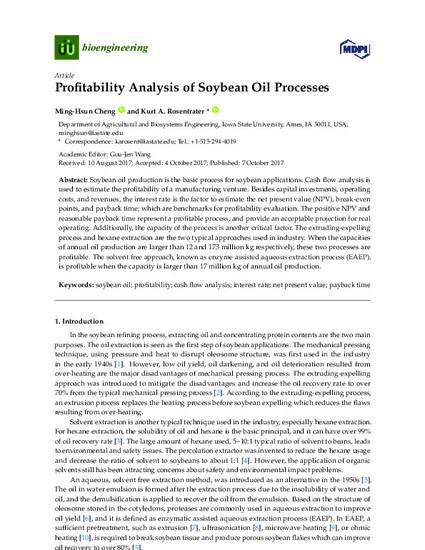
Soybean oil production is the basic process for soybean applications. Cash flow analysis is used to estimate the profitability of a manufacturing venture. Besides capital investments, operating costs, and revenues, the interest rate is the factor to estimate the net present value (NPV), break-even points, and payback time; which are benchmarks for profitability evaluation. The positive NPV and reasonable payback time represent a profitable process, and provide an acceptable projection for real operating. Additionally, the capacity of the process is another critical factor. The extruding-expelling process and hexane extraction are the two typical approaches used in industry. When the capacities of annual oil production are larger than 12 and 173 million kg respectively, these two processes are profitable. The solvent free approach, known as enzyme assisted aqueous extraction process (EAEP), is profitable when the capacity is larger than 17 million kg of annual oil production.
Available at: http://works.bepress.com/kurt_rosentrater/316/

This article is published as Cheng, Ming-Hsun, and Kurt A. Rosentrater. "Profitability Analysis of Soybean Oil Processes." Bioengineering 4, no. 4 (2017): 0083. DOI: 10.3390/bioengineering4040083. Posted with permission.